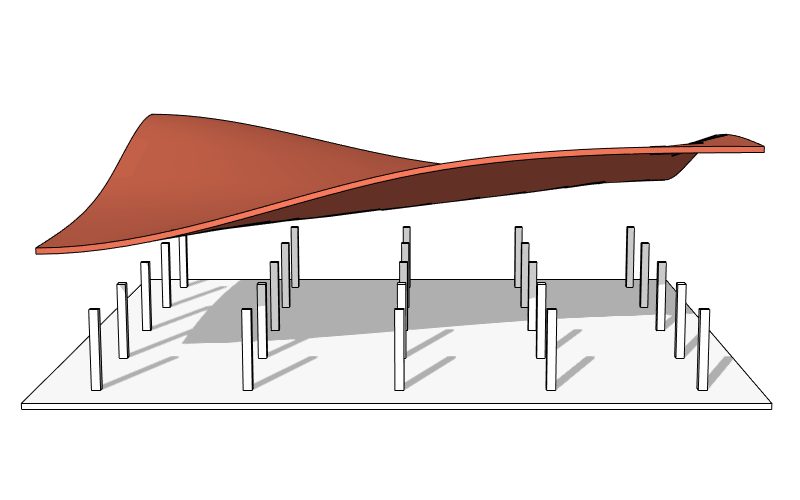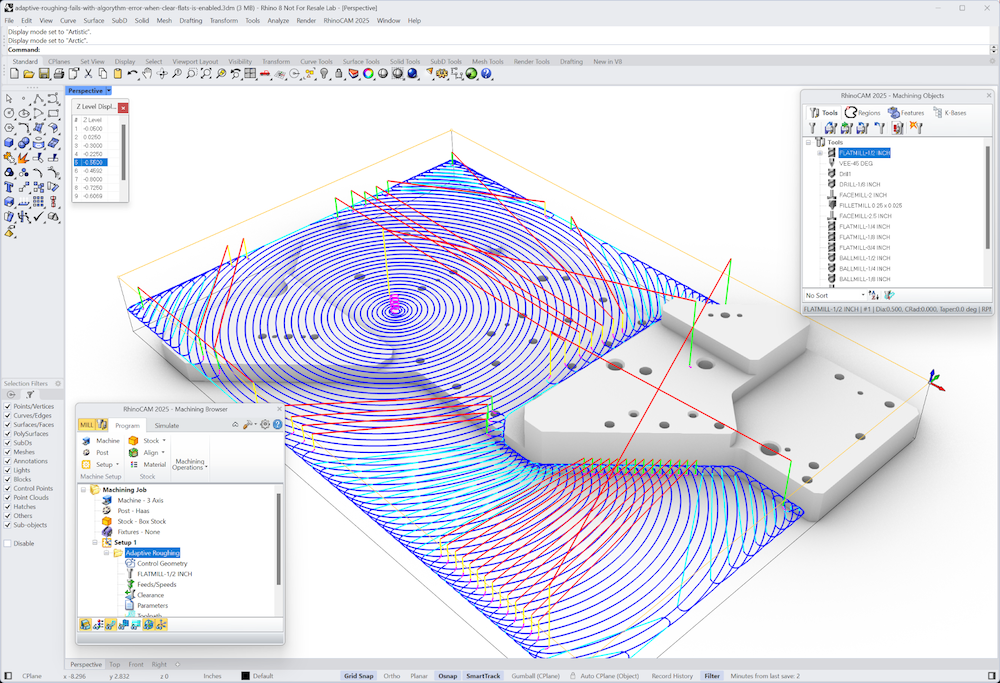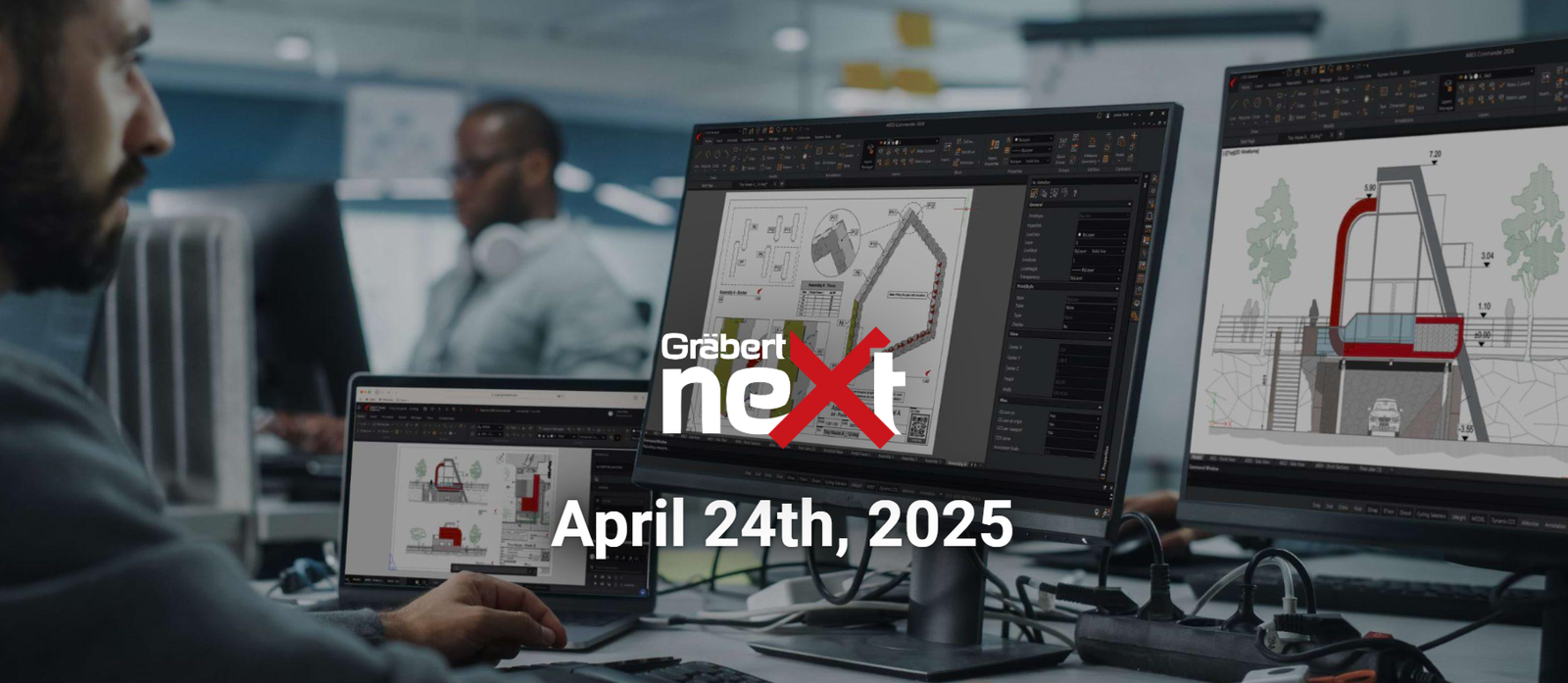Your Cart is Empty
Customer Testimonials
-
"Great customer service. The folks at Novedge were super helpful in navigating a somewhat complicated order including software upgrades and serial numbers in various stages of inactivity. They were friendly and helpful throughout the process.."
Ruben Ruckmark
"Quick & very helpful. We have been using Novedge for years and are very happy with their quick service when we need to make a purchase and excellent support resolving any issues."
Will Woodson
"Scott is the best. He reminds me about subscriptions dates, guides me in the correct direction for updates. He always responds promptly to me. He is literally the reason I continue to work with Novedge and will do so in the future."
Edward Mchugh
"Calvin Lok is “the man”. After my purchase of Sketchup 2021, he called me and provided step-by-step instructions to ease me through difficulties I was having with the setup of my new software."
Mike Borzage
The Story Behind the Rhino3D Book
May 21, 2009 4 min read
Since March 2009, Novedge has been giving away a free copy of the book Working with Rhinoceros 4.0 for every purchase of a new license of Rhino 4.0. The book is a beginner's user guide for learning Rhino 4.0 written by the Dutch designer Michiel van der Kley (website). Since I am Dutch myself, I was interested in learning more about Mr. Van Der Kley, so I asked him if he could write an article about his work and his new book. From the start the book has been very successful and we thought we'd share Michiel's story with its audience.
Mirjam Hart

I started as what was then called, a "self-producing designer" in the eighties of the last century, without any real computer skills. At that time it came down to making proper drawings of my designs, trying to find solutions for construction, and then building the thing myself. After a few years I was introduced by a colleague into the 3D world so to speak, with a DOS version of a program called 3dstudio4. I could not believe my eyes. Things that took me days were done in an hour. I desperately wanted to have the same skills, so I worked with that program, and bought almost every book there was to make sure I got to the bottom of the program. In the beginning I didn’t understand much of it, but in a year from that day I was able to produce pretty pictures and designs with the computer. Most of my colleagues thought I was going mad, not touching wood, hammering nails or whatever it was I did first.
the [3D] software helped me to broaden my world
The software helped me to broaden my world, it made me take the first steps into the world of producers and into the high-end design market.
There was one thing though. I was not able to draw exactly what I wanted for two reasons:
- My design language tended more and more towards an organic style and it seemed the program I had was not suitable for that kind of job.
- In order to get things done through the program, it felt as if you had to get into the head of the engineers and programmers that made the program, or else you would fail, and their logic steps weren’t the same as mine.
I tried to find another program that would fit my needs better, and to make a long story short, Rhino was the absolute winner.
I was so happy once I found out that the program actually worked the way I thought a program should have to work. To give a simple example: draw two funny shaped lines and let the program fill the space in between with a surface. Most Rhino users will think that that is not at all special, but believe me, exactly this kind of simplicity is lacking in most other programs I have tried.
After my great enthusiasm, I was puzzled by the fact that most of my colleagues were heavily seduced by or in the 3ds Max community, thinking that Rhino was just another attempt to yet another 3D program that could not come near this all-in-one program.
Rhino was the definite knock-out for product design and sculpting
For some parts of the industry, 3ds Max is maybe the best, I don’t know. And it is not that I think it’s a bad program (far from it) but Rhino was the definite knock-out for product design and sculpting in my belief, so I thought I had to try and convince all my colleagues.
In the end, after serious debate with other designers and sculptures that got the light, I decided to write a book, a kind of user guide. I live in Holland, where not everyone reads English and there was no Dutch book available then.
I started to write 6 chapters in Dutch, then stopped because it is quite a thing to do. After three years I picked it up again, rewriting the first 6 chapters and finishing the rest. I published the book myself. With the help of the McNeel community it drew a lot of attention, and the people from McNeel encouraged me to make an English version of the book as well. So I did.
That’s the book you can buy now.
I still use Rhino in almost every perspective
I still use Rhino in almost every perspective. As a quick sketchbook to get a grip on my preliminary ideas, to make the most convincing renderings, and to work things out, so they can be produced by the furniture industry. My work now is being produced by several leading furniture companies from Holland and abroad, amongst them Artifort, Arco, and even in my latest experience, a series of lights for Unseen Products. The lights are being produced in Nepal with a local paper, called Lokta paper. The paper is glued together with a special kind of glue in Nepal, placed in molds that are drawn and constructed in Rhino, CNC-milled in Holland, and shipped to Nepal. A real east-meets-west experience.
Michiel van der Kley

Also in NOVEDGE Blog

Enhance Your Designs with VisualARQ 3: Effortless Geometry Extensions for Walls and Columns
April 30, 2025 8 min read
Read More
MecSoft Unveils RhinoCAM 2025 and VisualCAD/CAM 2025 with Enhanced Features
March 08, 2025 5 min read
Read MoreSubscribe
Sign up to get the latest on sales, new releases and more …



